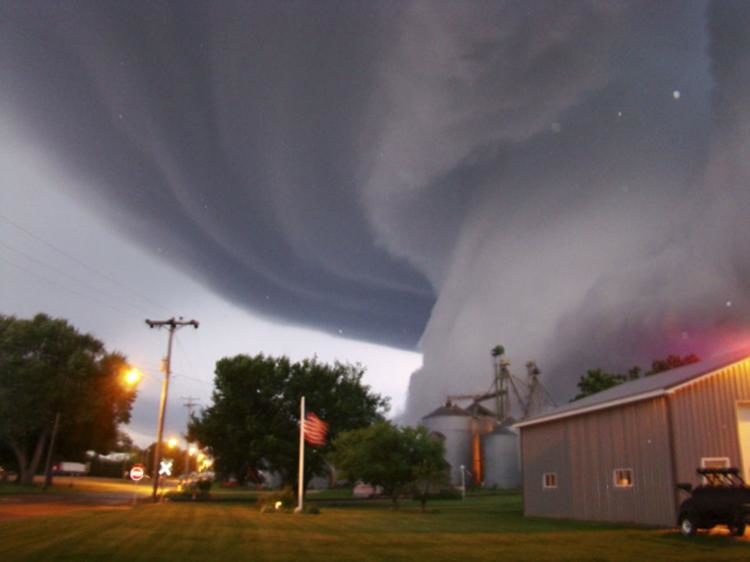
A team of scientists is hoping to enhance tornado detection with some help from an unlikely source — specialized microphones developed to assist governments in spotting illegal nuclear weapons tests.
Tornadoes are one of the most challenging extreme weather events for forecasters to predict and warn against. Often too small to leave a clear, unequivocal signature on radar, human eyeballs remain one of our primary tools for confirming these violent vortices.
But Roger Waxler of the University of Mississippi's National Center for Physical Acoustics believes tornadoes may be more trackable from a distance by listening to them.
Waxler's team, which previously developed a state-of-the-art microphone for picking up infrasound, or sound below the range of human hearing, presented evidence at the American Meteorological Society meeting in Boston last month that tornadoes emit infrasonic signals that can be heard over 50 miles away.
More work is needed to determine whether tornadoes have a distinctive sonic signature. If that turns out to be the case, it's possible infrasound microphones could one day augment current tornado warning systems, which are mainly based on Doppler radar and storm spotters.
"If this idea does work, it could be useful for forecasters to be situationally aware that a tornado has formed," said Brice Coffer, an atmospheric scientist at North Carolina State University who isn't involved in Waxler's work.
To determine whether a storm is likely to spawn a tornado, meteorologists look for several key ingredients, including high vertical wind shear in the storm's lower levels and atmospheric instability, which promotes the development of strong updrafts. They also track the storm via radar, keeping an eye out for telltale signs such as a curling of the precipitation field — a hallmark of tornado-producing supercell thunderstorms — and rotation inside the storm.
Doppler radar products can also detect the debris lofted by a tornado touchdown, offering radar confirmation of a twister.
If the right ingredients are present, forecasters will issue a tornado warning. But because tornadoes are meteorologically miniscule, actual detection of one very often depends on eyewitness accounts. This is especially problematic in the Southern U.S., where a combination of topography and trees often makes it hard to see tornadoes coming — part of the reason the region suffers some of the highest tornado fatality rates in the country.
Waxler believes infrasound could act as another pair of eyes (or ears), beefing up real-time tornado detection and giving communities precious extra minutes to prepare.
"We're hoping we could save lives," Waxler said.
Waxler's group started developing infrasound microphones in the early 2000s to help the U.S. government enforce the Comprehensive Nuclear Test Ban Treaty, which relies on a global network of seismic stations, microphones, and radionuclide detectors to spot illegal nuclear tests. By 2010, they were field testing the sensors at a large scale.
Concurrently, the group received funding from NOAA to study infrasound monitoring of violent weather. Working with Hyperion Technology Inc., they deployed infrasound arrays around Oklahoma to listen for tornadoes. The initial results were promising.
Over the last few years, with additional funding in support of NOAA's VORTEX Southeast campaign, Waxler's group has continued this research, deploying a network of infrasound microphone arrays across northern Alabama. On March 19, 2018, a storm system passed over the region, spawning at least 8 tornadoes that the team's arrays picked up.
The team has NOAA funding to collect more field data this year, and it's expanding its monitoring network to cover parts of Mississippi and Louisiana as well.



Reader Comments
to our Newsletter